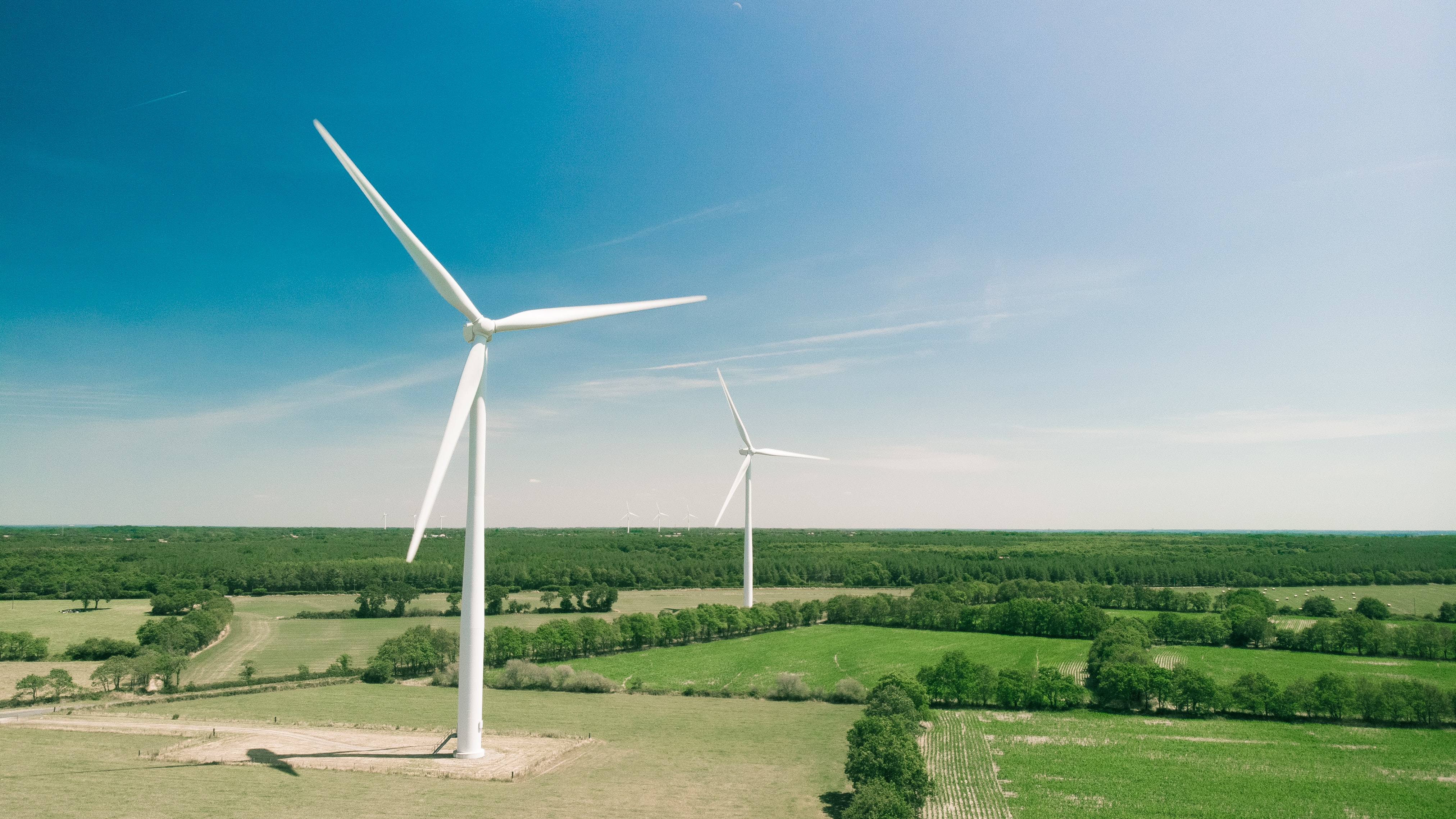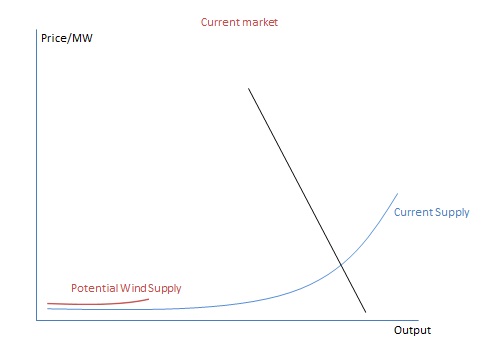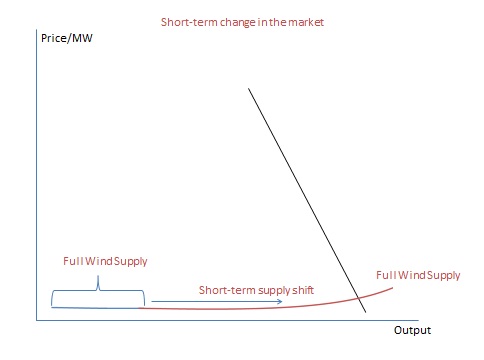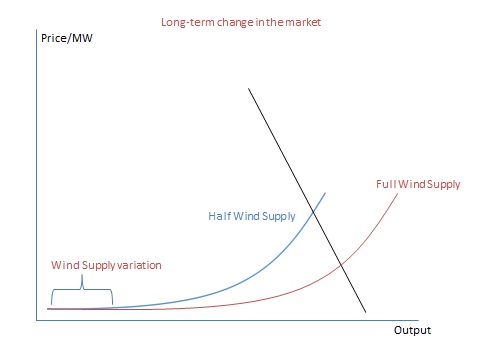Wind energy and electricity market dynamics
November 1, 2011
My senior thesis was on the potential effects of wind energy on electricity markets, so I was very happy to see questions (HT MR) about the short-term/long-term dynamics of electricity markets. I want to focus on exactly the same issue, but as regarding wind-power.
 Photo by Thomas Reaubourg
Photo by Thomas Reaubourg
For a quick background, electricity markets are one of the more unusual, in that generation capacity takes a long time and a lot of money to increase (in the form of generation plants), and the larger the up-front capital costs of the plant, the lower the per-unit marginal costs of generating electricity. So when I say “big” fossil generators, I’m talking about 400MW plants, which have huge costs in time and money to build, but once built, cost little to generate that huge 400MW output. Smaller plants tend to cost less (time, money) to build, but have much higher average and marginal generation costs. And, large plants take a while to ramp-up, or get going at capacity, so they can’t response to short-term shifts in demand. Small producers are much more nimble.
These factors combine in a very interesting way - electricity markets really do have a short-run/long-run difference in them. So here’s the thing about wind energy. It’s going to be the cheapest producer, or the most infra-marginal, because they bid $0 – electricity costs them nothing to produce, once the turbine is up. They therefore displace the other infra-marginal players, the large, steady, high-capex coal (and some natural gas) players.
But wind turbines can’t control their output. So what effect does this have?

Short-term
Both wind and large infra-marginal generate electricity, making it cheap. But large fossil-fuel generators are operating at an average loss (not necessarily a marginal one). So it doesn’t make sense to build large fossil generators. Thus as large fossil generators go offline, they aren’t replaced. Meanwhile, low capex, high marginal cost suppliers are on average more idle, and are shuttered short-term. Why just short-term? Wait for it…
But some of them do continue to generate. Specifically the most easy to ramp-up/ramp-down.

Intermediate term
More and more big fossil generators go out of business. These are replaced by smaller, more nimble fossil plants which can react dynamically to wind’s vagaries. Note that hydro-eletricity (dams) are generally a VERY good compliment to wind for this reason.
Long-term
Wind generators have take up a lot of the infra-marginal space, but some large generators remain. However, there is a large growth in small, nimble, but dirty and expensive fossil driven plants to counter-balance the wind farms.

So in the long-run wind-farms might actually increase the price of electricity, because they cannot control their own output.
This is not the same problem as short-term electricity balancing issues, which are much more temporary, and an infrastructure problem. This is about ability to have supply match demand. Don’t count this as a vote against wind-power – it is still a clean, near-zero marginal cost provider of electricity (and pretty cool looking).
We just need to find complementary ways of storing and distributing power to offset the uncertainty in their generation profile. Hydro is the natural complement, but isn’t always conveniently located. Batteries thus far aren’t efficient on large scales. But that’s just identifying the problem we need to work on, not saying it’s unsolvable.